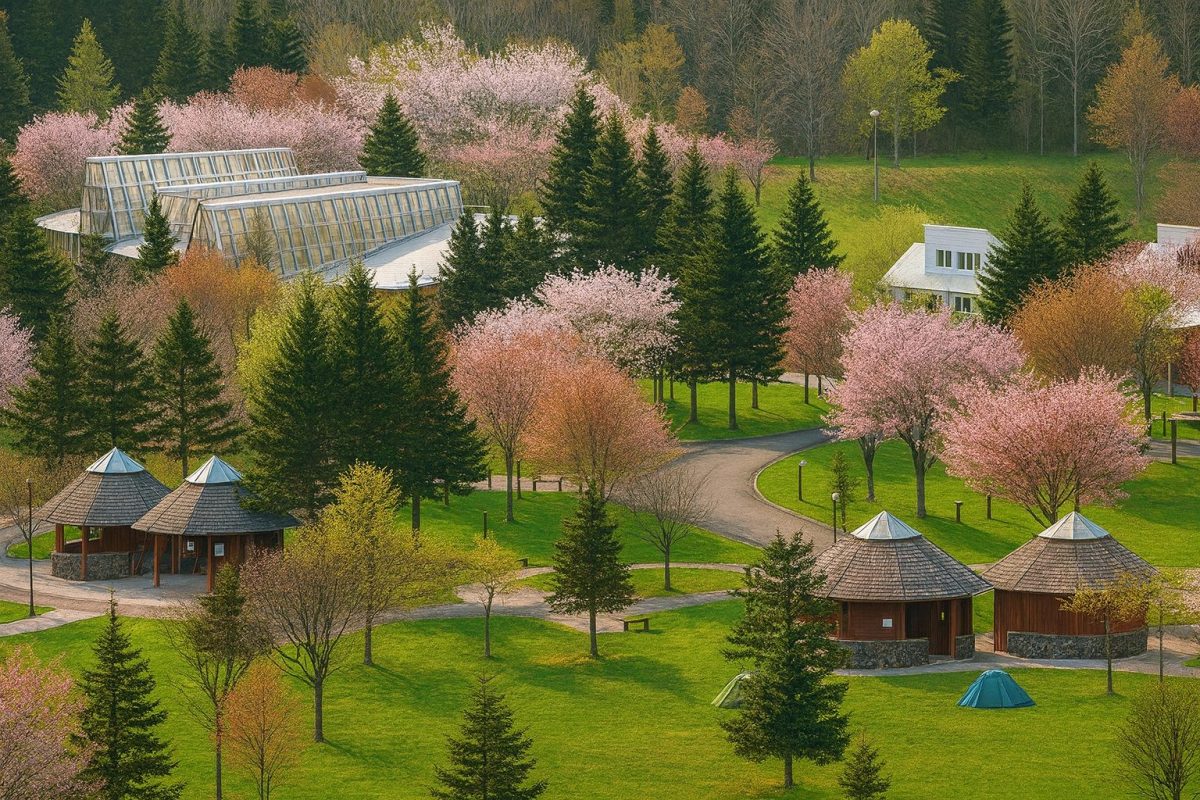| population | 3,219 peoples |
|---|---|
| area | 460.58 km² |
| population density | 6.99 peoples/km² |
Assabu Town, located in the Hiyama Subprefecture of southwestern Hokkaido, is a community rich in both nature and history. Its name is derived from the Ainu language, reflecting the deep influence of Ainu culture that remains in the area. The town’s core industries are agriculture and forestry, and it is especially famous as the birthplace of two icons of Hokkaido agriculture: the “May Queen” potato and Hokkaido rice. At the heart of the town rises Mt. Taiko, a scenic spot renowned for azaleas in spring and brilliant foliage in autumn. Rivers such as the Assabu River and Uzura River nurture the land and support the residents’ lives. Winters are harsh with heavy snow, yet it is precisely this climate that fosters unique agricultural products and traditions, making Assabu a truly distinctive destination.
Culture & Traditions
Historically, Assabu was under the control of the Matsumae Clan. In 1678, large-scale felling of Hiba (Thujopsis dolabrata var. hondae) began, marking the town’s rise as a forestry hub. Settlers also engaged in farming, laying the foundation of today’s community. The name “Assabu” is thought to derive from Ainu words such as “At-sam” (near elm bark) or “Hatcham-betsu” (river of the cherry bird), underscoring the close ties between people and nature in Ainu culture.
In agriculture, Assabu is celebrated as the birthplace of Hokkaido rice. The introduction of “Akamoge” rice in the late 19th century led to successful rice cultivation in Hokkaido for the first time, cementing the town’s place in history. Today, varieties such as “Fukkurinko” continue this legacy, alongside the famed May Queen potatoes, Hikaru Black soybeans, and sweet, crisp daikon radishes. The landscape is characterized by fertile fields and paddies, shaped by the abundant water resources of the area.
Forestry remains vital in the modern era, with sustainable forest management practices, timber and chip production, and environmental conservation at the core. The area is also academically significant, as it is the northernmost habitat of Japanese white pine (Goyo-matsu) and the southernmost habitat of Todo-fir (Abies sachalinensis).
Cultural traditions are equally important. Assabu is home to several forms of “Shishimai” (deer dances), including the An’noro, Kami-Nibushi, Dobashi, and Toro dances, which are recognized as intangible folk cultural properties of the town. Local speech reflects both the Hokkaido dialect and remnants of Ainu language, giving daily life a distinctive regional character.
Local Specialties
- Hokkaido Rice – Assabu is known as the birthplace of Hokkaido rice. Local rice has a rich aroma and balanced texture, prized throughout Japan.
- May Queen Potatoes – Introduced in the Taisho era, this variety spread nationwide from Assabu. Firm and resistant to breaking apart, they are ideal for curries and stews.
- Hikaru Black Soybeans – Glossy, richly flavored black soybeans that are excellent in simmered dishes, sweets, and miso.
- Daikon Radish – Grown with sharp day-night temperature differences, these radishes are sweet and crisp, perfect for pickling and stewing.
- Assabu Soba – Buckwheat grown with pure mountain water produces noodles with an intense aroma, enjoyed as hand-made soba by visitors.
Annual Events
- Assabu Furusato Summer Festival – Held every August, the highlight is the creation of a giant May Queen potato croquette. In 2022, the town achieved a Guinness World Record with a 279 kg croquette. The tradition continues annually, drawing crowds of residents and visitors alike.
- Assabu Snow Festival – A February celebration featuring snow sculptures, winter activities, and community festivities for all ages.
- Tate Castle Festival – Held at the site of the Matsumae Clan’s Tate Castle ruins, with samurai parades and traditional performances that bring history to life.
- Assabu River Cherry Blossom Festival – In April, the cherry blossoms along the Assabu River reach full bloom. Visitors can enjoy flower viewing while sampling local foods and specialties.
Access
- By Air: The nearest airport is Hakodate Airport, with direct flights from Tokyo, Osaka, and other major cities. The drive to Assabu takes about 90 minutes.
- By Train: There is no station within the town. The nearest are JR Yakumo Station (Hakodate Main Line) and Shin-Hakodate-Hokuto Station (Hokkaido Shinkansen). From there, buses or rental cars are needed.
- By Bus: Hakodate Bus operates services to and from Esashi, with stops in Assabu.
- By Car: About 75 minutes from central Hakodate via National Route 227, and around 4.5 hours from Sapporo.
Tourist Attractions
- Mt. Taiko Observatory – Offers panoramic views of the town, with azaleas in spring and colorful leaves in autumn.
- Tate Castle Ruins – Historic remains of the Matsumae Clan’s stronghold, now a public park and heritage site.
- Uzura Dam Auto Campground – A lakeside camping and fishing destination surrounded by pristine nature.
- Dobashi Nature Observation Forest (Reku no Mori) – Selected as one of “Japan’s 100 Best Nature Trails,” ideal for forest walks and environmental learning.
- Uzura Onsen – A beloved local hot spring facility, complete with lodging and training rooms.








